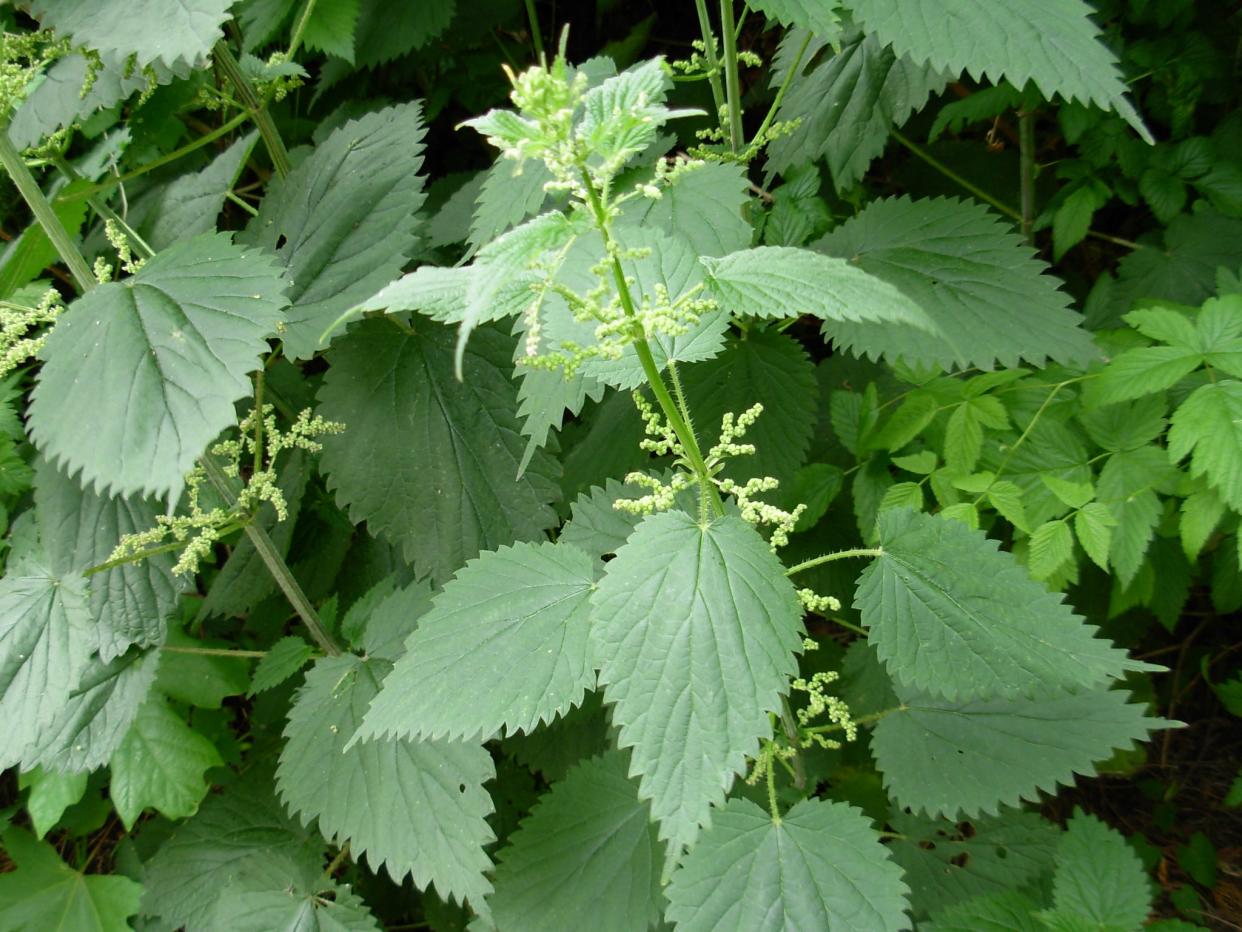Campbell Vaughn: The stinging nettle weed is well named, but also has health benefits

We get a lot of physical samples brought into the office between soil, water, insects, plants and weeds. Sometimes it is a weird-looking bug that sparks someone’s curiosity. Other times the sample is a leaf of an azalea that has some type of strange discoloration that needs some clarification on what might be going on with the plant. Boy did I get a surprise this week.
I took Monday off to help at a charity event. When I got to the office on Tuesday, there were of course 300,000 emails and messages to be dealt with upon arrival. Having that many messages is normal around here two weeks before Masters at the Richmond County Extension office.
After sorting through a pile of emails and phone calls, I saw there was a message to look at a weed sample left in the refrigerator that needed to be identified and find a control method. I grabbed the bag with said weed, set it on my desk and opened it up. I took the weed out with my fingers to get a good look at it and that dadgum plant stung me like a wasp. I started looking around for insects but thought there was no way an insect would be that active after being in a 34-degree refrigerator for 24 hours. I am glad most everyone in the office was out in the community doing various programming, because I used some language in a rather harsh tone that would have gotten my mouth washed out with soap back in the day.

After getting my wits back about me, I went and washed my fingers in cold water to soothe the pain with little to no effect. When I got back to my desk, I used some pencils to get the biting flora back into the bag and sealed that sucker back up. After about 10 minutes of research, I found out that the Addams Family weed was aptly named stinging nettle (Urtica dioica).
With a little help from North Carolina State’s Extension Plant Toolbox (which is a great resource), I found out what this nasty green weed was all about. Stinging nettle is a perennial herb that grows nearly worldwide. There are five subspecies of which four have stinging hairs. It occurs in moist sites along streams, meadows, and ditches, on mountain slopes, in woodland clearings, and in disturbed areas.
Stinging nettle generally grows on deep, rich, moist soil and doesn't do well in areas of drought. Stinging Nettle reproduces by rhizomes and seeds and can form dense colonies covering an acre or more. It is considered a noxious weed in some areas.
Campbell Vaughn: Crape myrtle bark scale is back and looks to be a big problem this year
Diving deeper into researching stinging nettle, it is a very popular herb for Western medicine. I found way more information on its health benefits than about its unpopularity as a weed in people’s landscapes. From some pretty reliable sources, this “herb” is sometimes used in relieving symptoms of joint pain, gout, anemia and even helping with enlarged prostates. It is also known to help with hay fever and urinary tract infections.
Obviously after almost a day’s worth of irritation of my fingers from my encounter with stinging nettle, it most likely needs to be processed before using as a medicinal herb. Take it from me, don’t weed your garden and then rub this stuff on your aching knee.
Control of nettle can be kind of tough in landscape turf, but I found a product made by Quali-Pro called Fahrenheit that works well on it. In open areas where you don’t have to worry about collateral plant damage, glyphosate or 2,4-D Amine works well.
I will be careful next time before I pull an unknown weed out of a bag to identify. I am half a century old and still learning.
It is peak season for blooms in Augusta. Enjoy them while they last.
This article originally appeared on Augusta Chronicle: Campbell Vaughn learns the hard way how stinging nettle got its name
